How do chickens mate / reproduce?مرغیاں کیسے ساتھی / دوبارہ پیدا کرتی ہیں؟
Chickens, like other birds, reproduce through sexual reproduction. The process of mating and reproduction in chickens involves several steps:
Courtship: Male chickens, known as roosters or cocks, engage in courtship behavior to attract the attention of female chickens, called hens. Courtship behaviors may include puffing up feathers, making vocalizations, performing dances, and displaying their colorful plumage.
Mounting: Once the rooster successfully courts a hen, he will mount her. The male climbs onto the female's back, tucking his tail beneath hers. He then positions his cloaca, which is the external opening for reproductive and digestive systems, against the hen's cloaca.
Cloacal Kiss: The cloacas of the male and female chickens come into contact during mating, which is known as a "cloacal kiss." This allows the transfer of sperm from the male to the female.
Sperm Transfer: During the cloacal kiss, the rooster's sperm is released into the female's cloaca. Sperm travel through the oviduct, a tube in the hen's reproductive system.
Fertilization: Inside the oviduct, if a hen has recently ovulated and released an egg, fertilization can occur. The sperm meet the egg, and if fertilization is successful, the genetic material from the rooster combines with that of the hen to form a zygote.
Egg Formation: After fertilization, the egg begins to form. Layers of albumen (egg white), membranes, and the shell are added as the egg moves through the oviduct. The entire process of egg formation takes approximately 24 to 26 hours.
Egg Laying: Once the egg is fully formed, the hen prepares to lay it. Contractions in the oviduct push the egg out of the hen's body through the cloaca. The egg is then laid outside the hen's body.
Incubation: If the hen is broody and wants to hatch the eggs, she may choose to incubate them. Incubation involves the hen sitting on the eggs to provide warmth and humidity necessary for the embryos to develop. This process takes approximately 21 days for chicken eggs.
It's important to note that in commercial egg production, roosters are not always present, and eggs are typically unfertilized, meaning they will not develop into chicks even if incubated. In such cases, chickens reproduce solely by laying eggs, and no mating is involved.
مرغیاں، دوسرے پرندوں کی طرح، جنسی تولید کے ذریعے دوبارہ پیدا کرتی ہیں۔ مرغیوں میں ملاوٹ اور تولید کے عمل میں کئی مراحل شامل ہیں:
کورٹ شپ: نر مرغیاں، جنہیں مرغ یا مرغ کہا جاتا ہے، مادہ مرغیوں کی توجہ مبذول کرنے کے لیے صحبت کے رویے میں مشغول ہوتے ہیں، جنہیں مرغیاں کہتے ہیں۔ صحبت کے رویوں میں پنکھوں کو پھونکنا، آوازیں لگانا، رقص کرنا، اور اپنے رنگین پلمیج کو ظاہر کرنا شامل ہو سکتا ہے۔
چڑھنا: ایک بار جب مرغ کامیابی کے ساتھ مرغی کو عدالت میں لے جاتا ہے، تو وہ اسے چڑھائے گا۔ نر مادہ کی پیٹھ پر چڑھتا ہے، اپنی دم کو اس کے نیچے سے ٹکراتا ہے۔ اس کے بعد وہ اپنے کلوکا کو، جو کہ تولیدی اور نظام ہاضمہ کے لیے بیرونی سوراخ ہے، کو مرغی کے کلوکا کے خلاف رکھتا ہے۔
کلوکل کس: نر اور مادہ مرغیوں کے کلوکاس ملن کے دوران رابطے میں آتے ہیں، جسے "کلوکل کس" کہا جاتا ہے۔ یہ مرد سے مادہ میں سپرم کی منتقلی کی اجازت دیتا ہے۔
نطفہ کی منتقلی: کلوکل بوسہ کے دوران، مرغ کا نطفہ مادہ کے کلوکا میں خارج ہوتا ہے۔ نطفہ بیضوی نالی کے ذریعے سفر کرتا ہے، مرغی کے تولیدی نظام میں ایک ٹیوب۔
فرٹلائزیشن: بیضہ نالی کے اندر، اگر مرغی نے حال ہی میں بیضہ کیا ہے اور انڈا چھوڑا ہے، تو فرٹلائزیشن ہو سکتی ہے۔ نطفہ انڈے سے ملتا ہے، اور اگر فرٹلائجیشن کامیاب ہو جاتی ہے، تو مرغ کا جینیاتی مواد مرغی کے ساتھ مل کر زائگوٹ بناتا ہے۔
انڈے کی تشکیل: فرٹیلائزیشن کے بعد انڈا بننا شروع ہو جاتا ہے۔ البومین (انڈے کی سفیدی)، جھلیوں اور خول کی تہوں کو شامل کیا جاتا ہے جب انڈا بیضہ نالی سے گزرتا ہے۔ انڈے کی تشکیل کے پورے عمل میں تقریباً 24 سے 26 گھنٹے لگتے ہیں۔
انڈے دینا: ایک بار انڈے کے مکمل بننے کے بعد، مرغی اسے دینے کی تیاری کرتی ہے۔ بیضہ نالی میں سنکچن انڈے کو کلوکا کے ذریعے مرغی کے جسم سے باہر دھکیل دیتی ہے۔ پھر انڈے کو مرغی کے جسم سے باہر رکھا جاتا ہے۔
انکیوبیشن: اگر مرغی بوڑھی ہے اور انڈے نکالنا چاہتی ہے، تو وہ انہیں انکیوبیشن کا انتخاب کر سکتی ہے۔ انکیوبیشن میں انڈوں پر بیٹھی ہوئی مرغی شامل ہوتی ہے تاکہ جنین کی نشوونما کے لیے ضروری گرمی اور نمی فراہم کی جا سکے۔ اس عمل میں چکن کے انڈوں کے لیے تقریباً 21 دن لگتے ہیں۔
یہ نوٹ کرنا ضروری ہے کہ تجارتی انڈے کی پیداوار میں، مرغ ہمیشہ موجود نہیں ہوتے ہیں، اور انڈے عام طور پر غیر زرخیز ہوتے ہیں، یعنی ان کی نشوونما کے بعد بھی وہ چوزے نہیں بن پائیں گے۔ ایسے معاملات میں، مرغیاں مکمل طور پر انڈے دے کر دوبارہ پیدا کرتی ہیں، اور اس میں کوئی ملاوٹ شامل نہیں ہے۔
-
 18:42
18:42
The AmericanRifleman
1 year agoChickens Not Laying Eggs
9 -
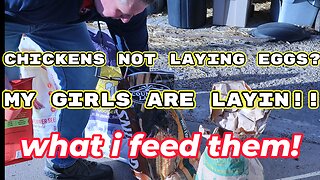 5:39
5:39
Every Day Survival 24-7
1 year ago $0.01 earnedchickens not laying eggs
3 -
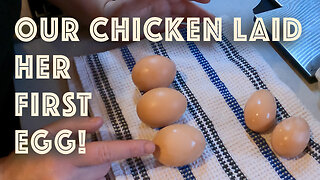 16:33
16:33
Hagon's Homestead
1 year agoOur Chickens Laid Their First Eggs!
8 -
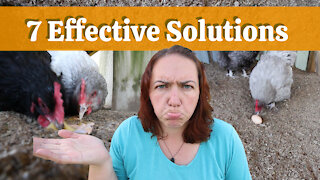 4:18
4:18
Fantail Valley Homestead
2 years agoDo chickens eat their own eggs?
5 -
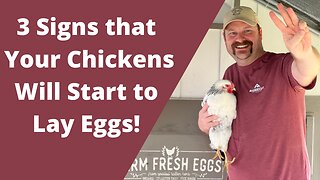 10:11
10:11
Cedar_Porch_Homestead
6 months agoWHEN DO CHICKENS START TO LAY EGGS? | 3 Ways to Tell & How to Care for Them
105 -
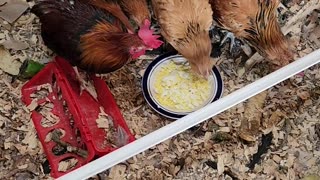 0:59
0:59
the1TC
8 months agoChickens Doing what Chickens do.
35 -
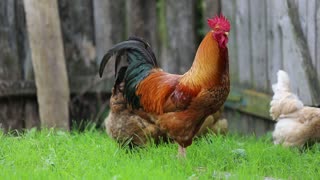 0:14
0:14
Beautiful animals and birds in the world
3 years agoChickens are playing
63 -
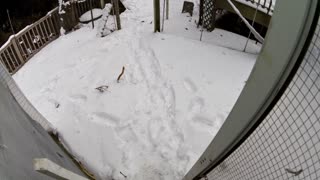 4:48
4:48
geoffreyflanders
1 year agoChickens
5 -
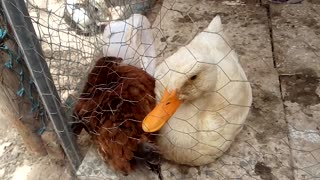 0:27
0:27
Fun And Funny Today
3 years agoChickens and ducks together
65 -
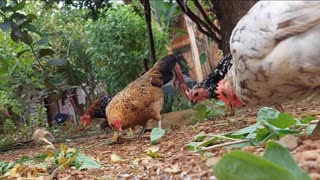 0:32
0:32
HOUSE ANIMALS
1 year agoChickens
3